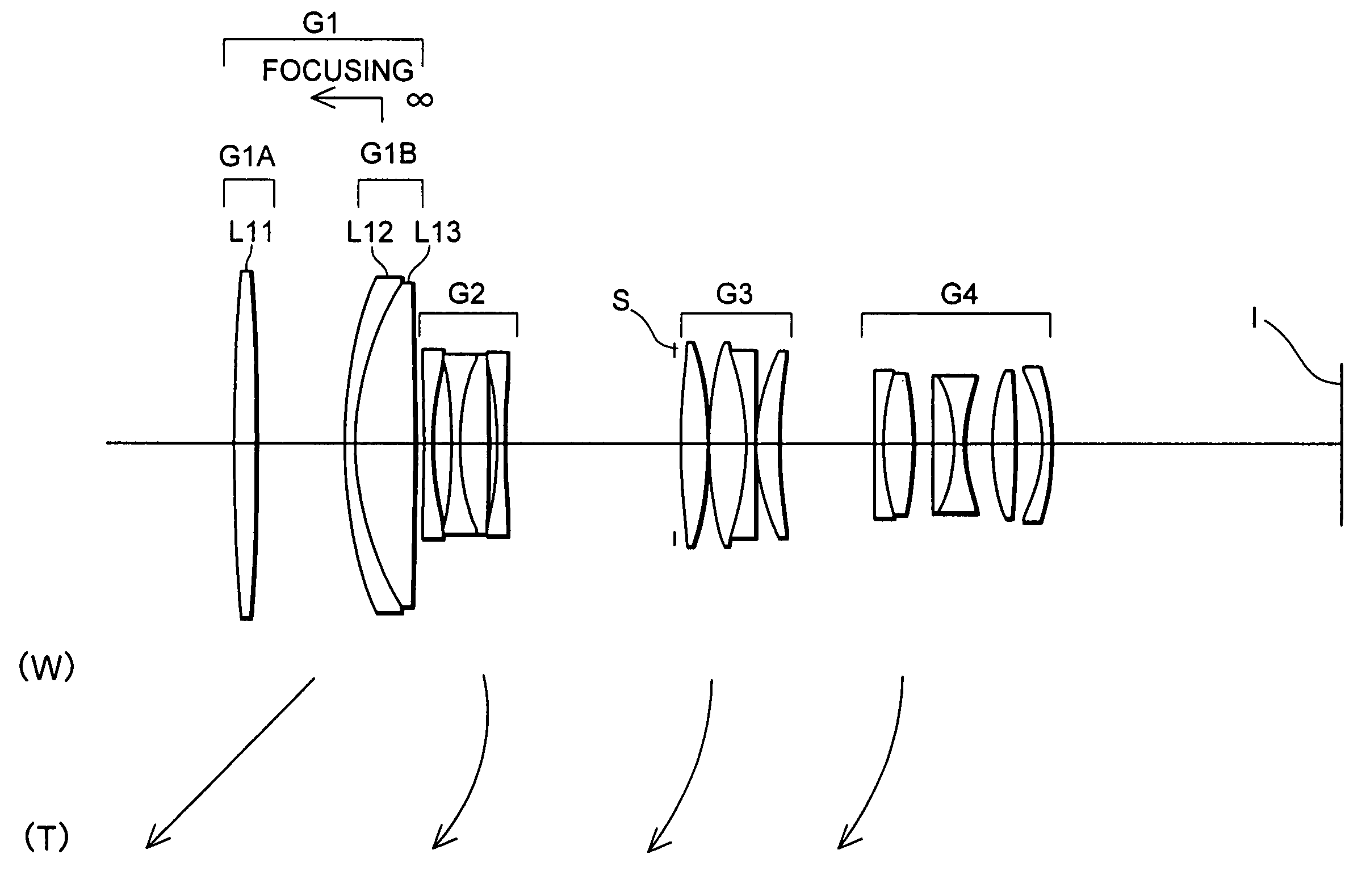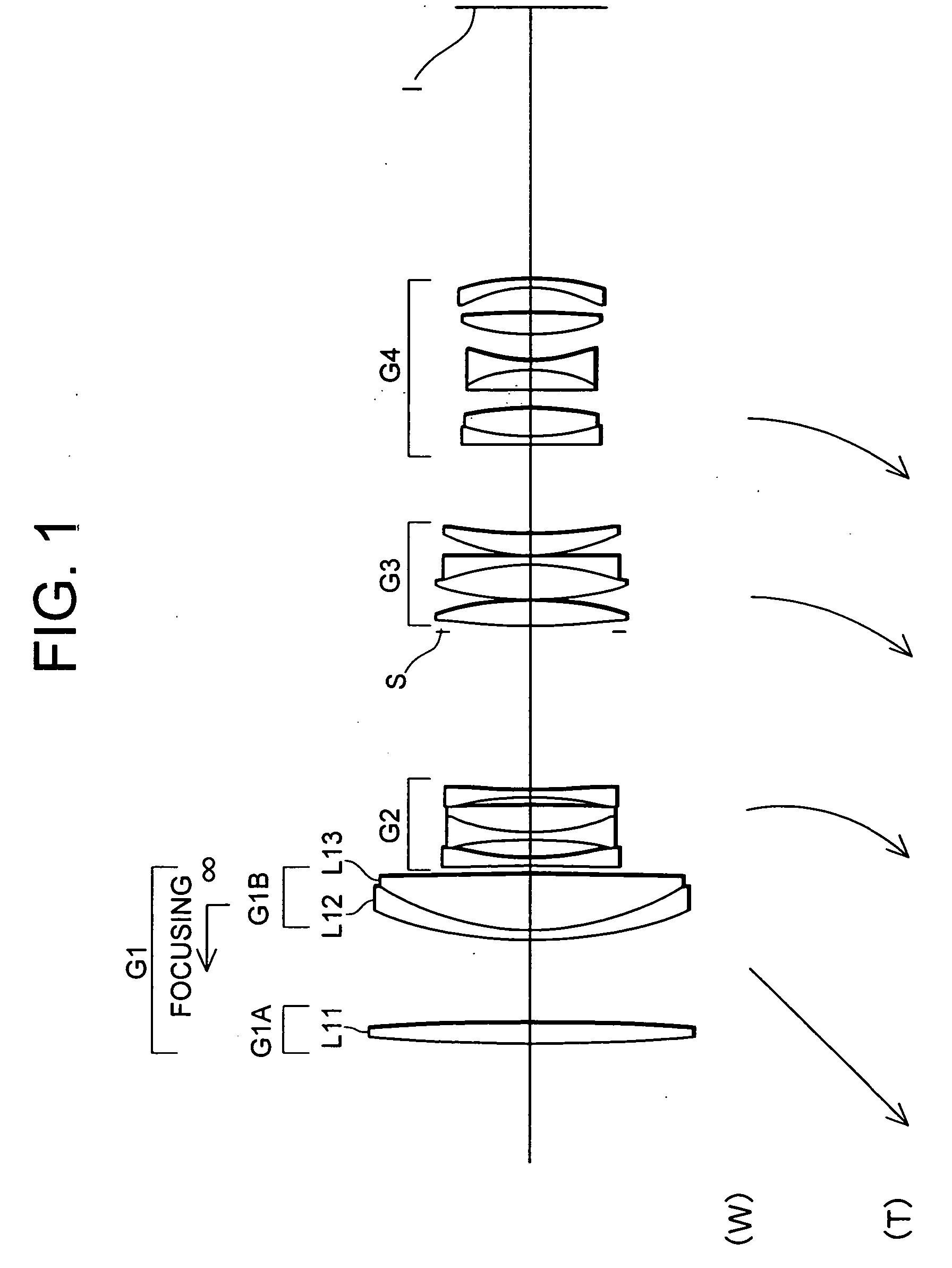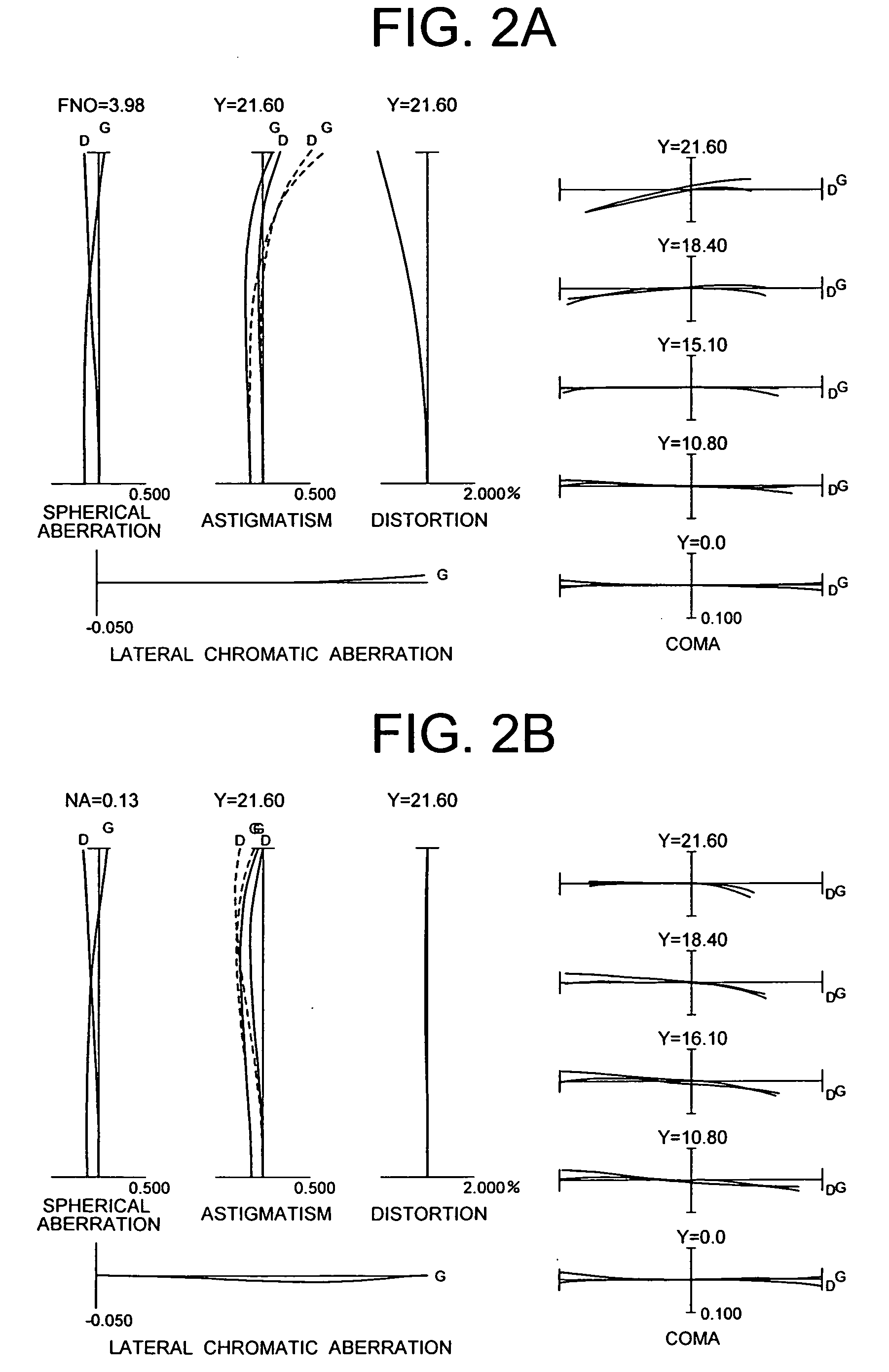Zoom lens system
a zoom lens and lens body technology, applied in the field of zoom lens systems, can solve the problems of compromising compactness or high optical performance, affecting the optical performance of the lens, so as to achieve the effect of reducing manufacturing costs and simplifying the lens construction
- Summary
- Abstract
- Description
- Claims
- Application Information
AI Technical Summary
Benefits of technology
Problems solved by technology
Method used
Image
Examples
first embodiment
[0110] The zoom lens system according to the first embodiment of the present invention is composed of, in order from an object, a first lens group having positive refractive power, a second lens group having negative refractive power, and a third lens group having positive refractive power. When a state of lens group positions varies from a wide-angle end state to a telephoto end state, a distance between the first lens group and the second lens group increases, and a distance between the second lens group and the third lens group decreases.
[0111] The first lens group is composed of, in order from the object, a 1A lens group G1A having positive refractive power and a 1B lens group G1B having positive refractive power. Focusing from infinity to a close-rang object is carried out by moving only the 1B lens group G1B to the object.
[0112] With this construction, it can be prevented to expose movable lens group for focusing, so that it is advantageous for auto focus. Moreover, by compo...
example 1
[0138]FIG. 1 is a diagram showing a sectional view of a zoom lens system according to Example 1 of a first embodiment of the present invention together with a trajectory of each lens group upon zooming. In FIG. 1, the zoom lens system is composed of, in order from an object, a first lens group G1 having positive refractive power, a second lens group G2 having negative refractive power, an aperture stop S, a third lens group G3 having positive refractive power, and a fourth lens group G4 having negative refractive power. When the state of lens group positions varies from a wide-angle end state (W) to a telephoto end state (T), the first lens group G1, the third lens group G3, and the fourth lens group G4 move to the object and the second lens group G2 moves once to the image and, then, moves to the object such that a distance between the first lens group G1 and the second lens group G2 increases, a distance between the second lens group G2 and the third lens group G3 decreases, and a...
example 2
[0149]FIG. 5 is a diagram showing a sectional view of a zoom lens system according to Example 2 of the first embodiment of the present invention together with a trajectory of each lens group upon zooming. In FIG. 5, the zoom lens system is composed of, in order from an object, a first lens group G1 having positive refractive power, a second lens group G2 having negative refractive power, an aperture stop S, a third lens group G3 having positive refractive power, and a fourth lens group G4 having negative refractive power. When the state of lens group positions varies from a wide-angle end state (W) to a telephoto end state (T), the first lens group G1, the third lens group G3, and the fourth lens group G4 move to the object and the second lens group G2 moves once to the image I and, then, moves to the object such that a distance between the first lens group G1 and the second lens group G2 increases, a distance between the second lens group G2 and the third lens group G3 decreases, a...
PUM
 Login to View More
Login to View More Abstract
Description
Claims
Application Information
 Login to View More
Login to View More - R&D
- Intellectual Property
- Life Sciences
- Materials
- Tech Scout
- Unparalleled Data Quality
- Higher Quality Content
- 60% Fewer Hallucinations
Browse by: Latest US Patents, China's latest patents, Technical Efficacy Thesaurus, Application Domain, Technology Topic, Popular Technical Reports.
© 2025 PatSnap. All rights reserved.Legal|Privacy policy|Modern Slavery Act Transparency Statement|Sitemap|About US| Contact US: help@patsnap.com



